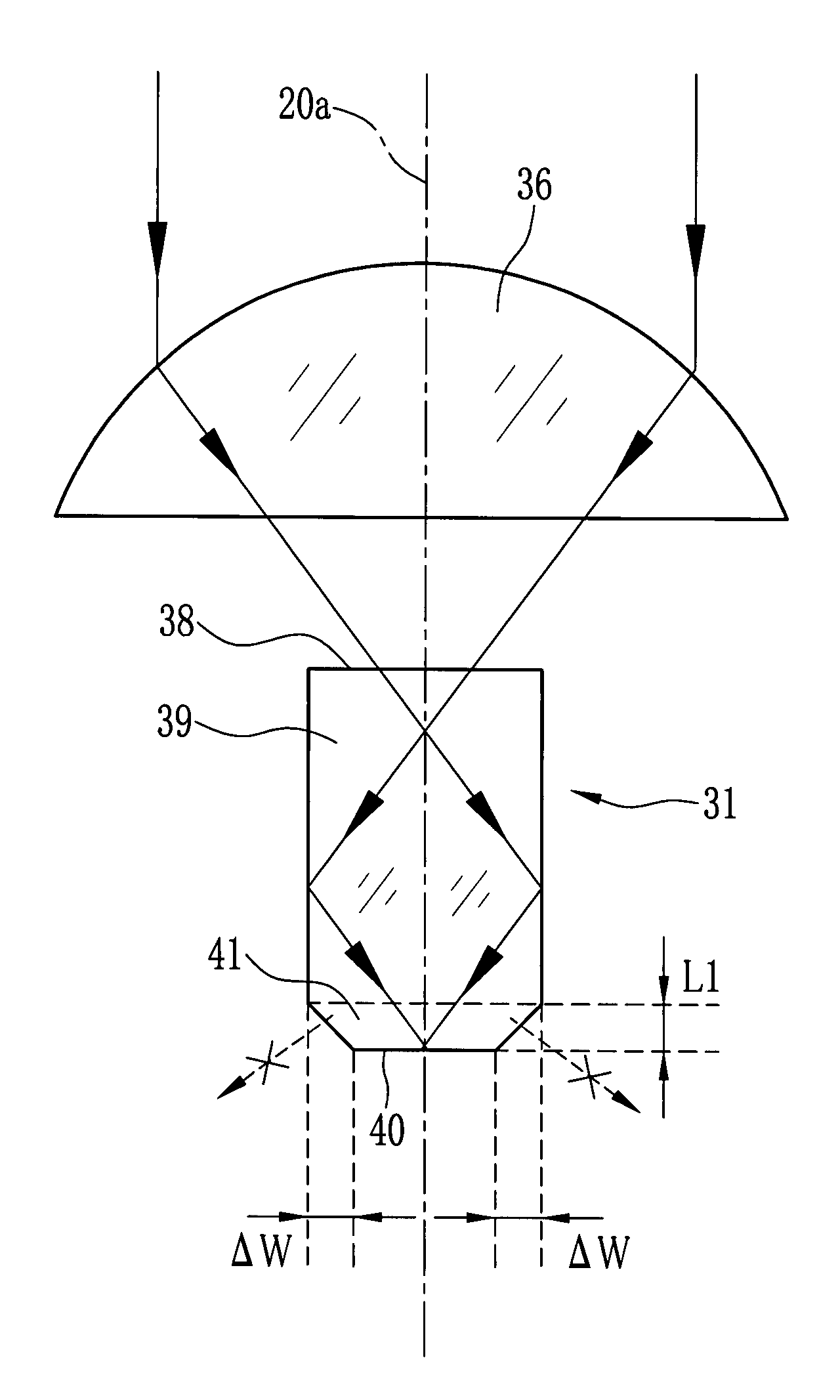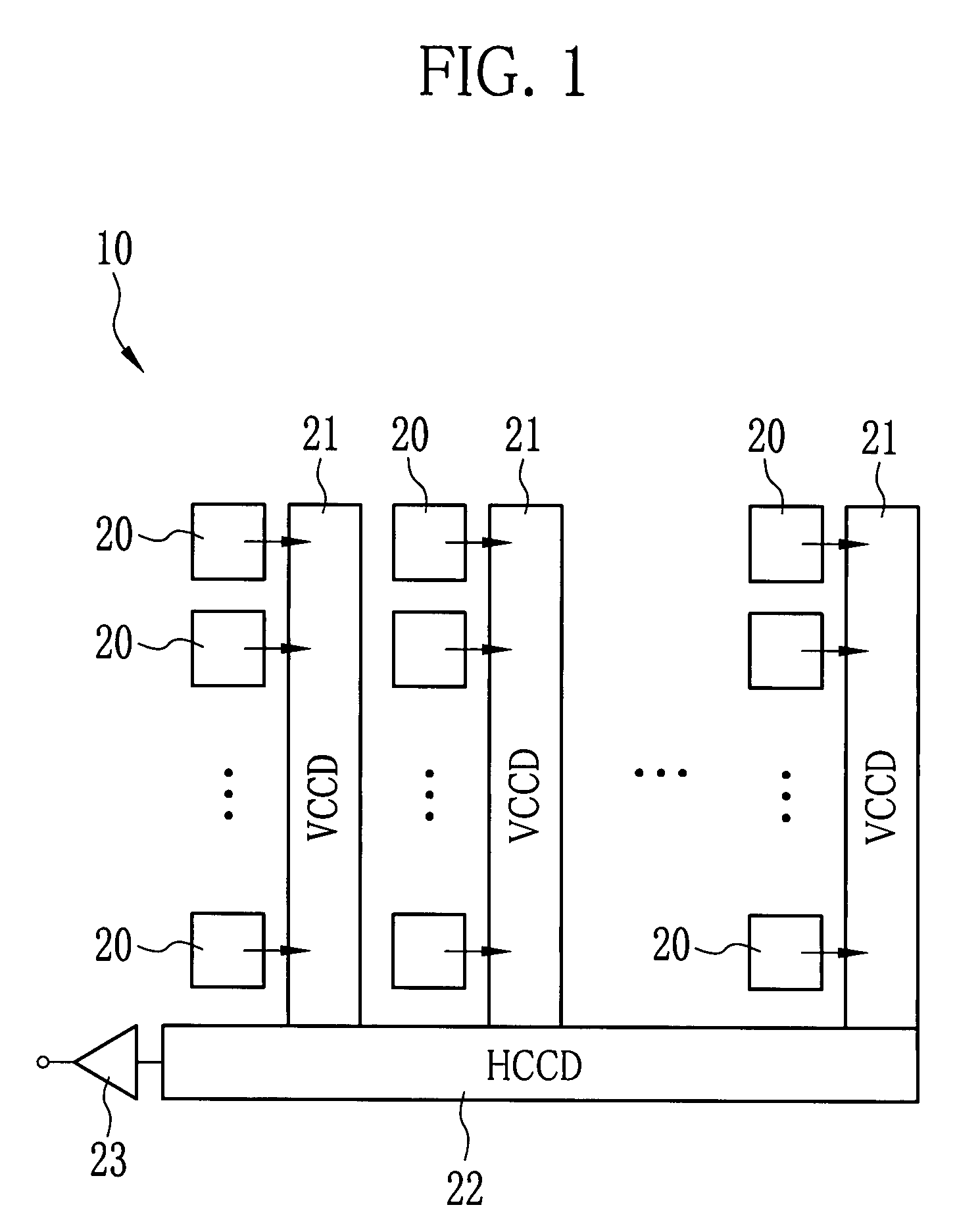Solid state imaging device
a solid-state imaging and imaging device technology, applied in the direction of radioation control devices, instruments, television systems, etc., can solve the problems of ineffective directness of incident light to the light receiving elements, drawbacks of prior art light guides, etc., to reduce noise and small width
- Summary
- Abstract
- Description
- Claims
- Application Information
AI Technical Summary
Benefits of technology
Problems solved by technology
Method used
Image
Examples
Embodiment Construction
[0019]Referring to FIG. 1, a CCD image sensor 10 has a plurality of light receiving elements (photodiodes) 20 arranged in a two dimensional matrix form. The light receiving elements 20 convert light into an electrical signal equivalent to an amount of the light, and store this signal charge. The CCD image sensor 10 also has vertical transfer CCDs (VCCDs) 21 and a horizontal transfer CCD (HCCD) 22 which, in combination, transfer the signal charges of the light receiving elements 20 using an interline transfer method. The vertical transfer CCDs 21 extend along each column of the light receiving elements 20. The horizontal transfer CCD 22 is connected to the terminal ends of all the vertical transfer CCDs 21.
[0020]The signal charge in every light receiving element 20 is read out, all at once, into the vertical transfer CCDs 21 through transfer gates (not shown) in a predetermined readout cycle. The vertical transfer CCDs 21 transfer these signal charges, a step at a time, to the horizo...
PUM
 Login to View More
Login to View More Abstract
Description
Claims
Application Information
 Login to View More
Login to View More - R&D
- Intellectual Property
- Life Sciences
- Materials
- Tech Scout
- Unparalleled Data Quality
- Higher Quality Content
- 60% Fewer Hallucinations
Browse by: Latest US Patents, China's latest patents, Technical Efficacy Thesaurus, Application Domain, Technology Topic, Popular Technical Reports.
© 2025 PatSnap. All rights reserved.Legal|Privacy policy|Modern Slavery Act Transparency Statement|Sitemap|About US| Contact US: help@patsnap.com



